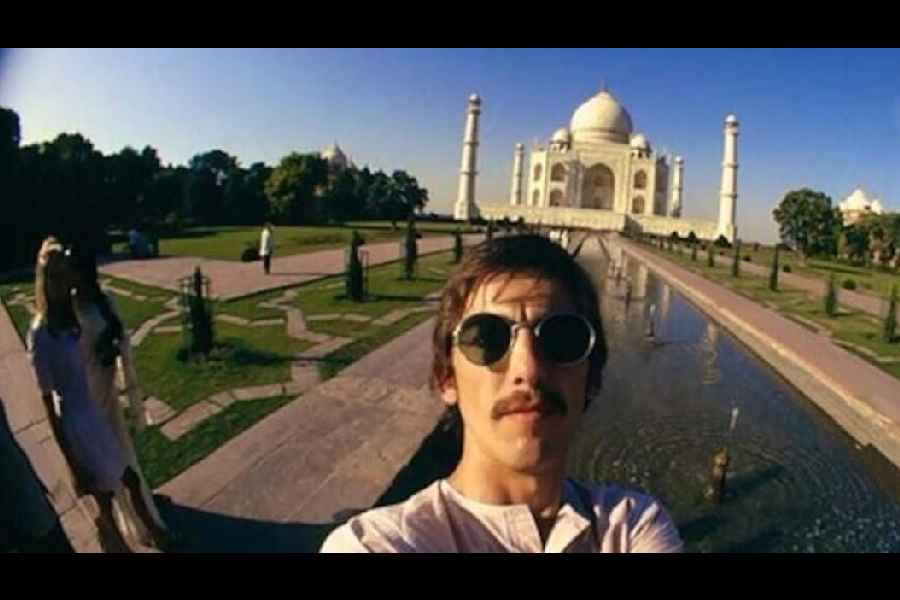The 1960s was an era of awe and tumult, innovation and fragmentation. Artists were presenting new modes of perception, one of them being the fisheye view of the world where reality dissolves into a new way of looking at life. Jimi Hendrix, Bob Dylan, the Beatles… all of them were falling back on the fish’s view of the world. Yesterday was World Photography Day, a day that celebrates the moment when photography went “open source” in 1839. Louis Daguerre and Isidore Niepce were granted pensions by the French government for making their photographic processes available to the public.
The fisheye lens remains one of the most expressive forms of photography. When the Beatles went on their mission to conquer hearts in the US in the 1960s, the fisheye lens kept pace with them. At a Miami press conference, the lens wrapped perspective and reflected a different side of the Fab Four. It made them appear larger than life. At the Woodstock music festival, its permanence was guaranteed.
You may wonder if Gen Z is using them. For them, #NoFilter selfie days are over. More fashionable are distortion and lo-fi images. The 0.5 ultra-wide-angle lens on the iPhone is where the magic lies for most young people. Many young people turn to a more effective item to distort reality — the traffic mirror.
Seeing things differently
Of course, we need to turn back the clock to see how it all started. Inventor and physicist Robert W. Wood was in his lab in 1906. He had an idea that can be considered crazy enough to fit the mould of the iconic ‘Think Different’ Apple commercial: “Here’s to the crazy ones, the misfits, the rebels, the troublemakers, the round pegs in the square holes… the ones who see things differently.”
Wood wanted to know how a fish would view the world beneath the water. He took a bucket of water, a pinhole camera, mirrored glass and a bright light source. It was a success and the lens grew in prominence in the 1920s when it was used to study cloud formations in meteorology. German inventors tried to replicate the fisheye image with an optical lens and this was carried out with a Japanese company called Nikon. In 1957, with the creation of Nikon’s first 180-degree fisheye lens, there was a major shift in popular culture.
Before it caught the attention of music groups, it became a tool for some magazine photographers. A 1957 issue of Life magazine had an essay on how Ed Clark, the magazine’s photographer, used the fisheye lens to capture the “fishy financial finagling of Teamster boss Dave Beck”. Nikon’s first fisheye lens for consumers, in general, came in 1962. Everything changed.
When the legendary George Harrison arrived in India in 1966, he spent a lot of his time taking self-portraits using a fisheye lens. His pictures were not the touristy type. He saw a “mixture of unbelievable things” and then he turned the camera on himself to capture a different side to himself. Later he referred to the sci-fi show The Prisoner as an illustration of life as “a number”. In the show, a mysterious white bubble captures anyone trying to escape the organisation. His photos reflect the fishbowl living fame can bring.

George Harrison's self-portrait is a good example of fisheye lens photography
Another important moment was when director John Frankenheimer used it in the 1966 film Seconds. “In Seconds, the (idea of) distortion was terribly important. The distortion of what society had made this man, what the Company then turned him out to be, and finally when he was going to his death everything had to be that complete distortion of reality and the fact that it was all just utter nonsense,” Frankenheimer told Gerald Pratley in 1969.
The fisheye look found a new lease of life in the 1990s when music video directors started using the technique. The Beastie Boys video Shake Your Rump was shot with three cameras equipped with a fisheye lens. It worked brilliantly for the hip-hop genre and the lens gave the genre its “signature look”, as Vox points out. The director Hype Williams used it to focus on Missy Elliott’s futuristic outfits in the music video for The Rain (Supa Dupa Fly) and Busta Rhymes’s different characters in Gimme Some More. Williams directed one video after another in the 1990s, featuring a fisheye perspective. At the same time, teenagers began hankering after fisheye videos of skateboarding.
Technology has made it easy to achieve fisheye distortion, especially when you consider the fisheye selfie with the 0.5 lens on the iPhone. It’s more playful than a front-facing selfie, offering a casual, creative look. Some may call it shallow but if we were to get through to a new generation, it’s necessary to start talking a new lingo.











